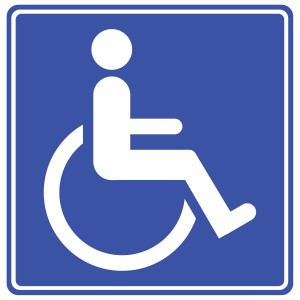
By: Mikhail Petrov
On December 17, 2015, in the civil case of Pearson v. Colvin, the Fourth Circuit reversed and remanded the decision of the district court to deny Jeffrey Pearson (“Pearson”) his application for Social Security disability benefits. Pearson argues the administrative law judge (“ALJ”) failed to resolve a conflict between a vocational expert’s testimony and the Dictionary of Occupational Titles (Social Security Administration resource that lists occupations existing in the economy and explains some of the physical and mental requirements of those occupations). The Fourth Circuit agreed with Pearson.
The Facts of the Case
Pearson worked in a number of fields, including as a groundskeeper and a press operator in a plastics factory. On February 5, 2009 Pearson was laid off; He applied for Social Security disability benefits six weeks later. The application was denied initially, and then again upon rehearing. An ALJ affirmed the denial. The Social Security Appeals Council granted review, and remanded the case for further consideration, including testimony from a vocational expert.
In the second ALJ hearing, the judge asked the expert that if the expert’s testimony differed from what was contained in the Dictionary of Occupational Titles (“Dictionary”), to advice both Pearson’s counsel and the judge. The expert agreed to do so.
The vocational expert concluded that Pearson could work as a motel cleaner, cashier, or machine tender/bench press operator. Thus, the ALJ concluded that Pearson could perform jobs that exist in significant numbers in the national economy. Pearson was again found to be ineligible for disability benefits.
Pearson appealed to the district court, which granted summary judgment to the Commissioner. Pearson appealed, arguing that the district court erred in recommending that the ALJ’s findings be affirmed because ALJ did not resolve a conflict between the vocational expert’s testimony and the Dictionary as to whether the jobs identified by the expert required an ability Pearson did not have—to frequently reach overhead with both arms.
What Constitutes a Disability?
There are five prongs that must be met to be eligible for disability. The claimant has the burden of proof on the first four prongs. Then, the Commissioner bears the burden to prove the fifth prong, that the claimant is able to perform alternative work. In the fifth prong, the ALJ considers the claimant’s age, education, work experience, and residual functional capacity in order to decide whether he can perform alternative work that exists in significant numbers in the national economy. According to the Social Security Administration Policy Interpretation Ruling (“Interpretation Ruling”), to answer the question of whether “sufficient other work exists for the claimant in the national economy” the ALJ relies primarily on the Dictionary. The ALJ “may also use” a vocational expert to address complex aspects of the employment determination, including the expert’s observations of what a particular job requires in practice or the availability of given positions in the national economy.
Lastly, the expert’s testimony can sometimes conflict with the Dictionary. The Interpretation Ruling requires that the ALJ inquire, on the record, whether the vocational expert’s testimony conflicts with the Dictionary, and also requires that the ALJ to elicit a reasonable explanation for and resolve conflicts between the expert’s testimony and the Dictionary. The ALJ must, by determining if the vocational expert’s explanation is reasonable, resolve conflicts “before relying on the [expert’s] evidence to support a determination or decision about whether the claimant is disabled.”
The parties disputed two aspects of the Interpretation Ruling: (1) whether the Interpretation Ruling requires the ALJ only to ask the vocational expert whether his testimony conflicts with the Dictionary or also requires the ALJ to identify conflicts independently from the vocational expert; and (2) if the ALJ must independently identify conflicts, which conflicts the Interpretation Ruling requires an ALJ to identify.
ALJ Must Independently Identify Conflict Between Vocational Expert and Dictionary.
Pearson maintained that the Interpretation Ruling required the ALJ to do more than just ask the vocational expert if his testimony conflicts with the Dictionary. Instead, the Interpretation Ruling required the ALJ to independently identify all possible conflicts between the expert’s testimony and the Dictionary. The Commissioner argued that the Interpretation Ruling imposes on the ALJ only the single affirmative responsibility to ask the vocational expert whether his testimony conflicts with the Dictionary.
The Fourth Circuit agreed with Pearson that an ALJ has not fulfilled his affirmative duty merely because the vocational expert responds “yes” when asked if her testimony is consistent with the Dictionary. ALJ independently must identify conflicts between the expert’s testimony and the Dictionary.
Conflicts That the ALJ Must Identify
The language of the Interpretation Ruling explains which conflicts the ALJ must identify and resolve before relying on the vocational expert’s testimony. Though the Interpretation Ruling uses several adjectives to describe the relevant conflict, the most common and the most compelling is “apparent,” which has two definitions: “obvious,” and “seeming real or true, but not necessarily so”
The context of the word “apparent” makes it clear that the Interpretation Ruling intends the latter meaning, that the ALJ must identify where the expert’s testimony seems to, but does not necessarily, conflict with the Dictionary. The Interpretation Ruling explains that if the vocational expert’s evidence appears to conflict with the Dictionary, the adjudicator will obtain a reasonable explanation for the apparent conflict. Additionally, the title of one of the Interpretation Ruling’s section is “Conflicts or Apparent Conflicts.” That title would be redundant if “apparent” meant “obvious.”
This definition of “apparent” embraces the reality that, in many cases, testimony may only appear to conflict with the Dictionary, and the vocational expert may be able to explain that there actually is not a conflict.
However, if the ALJ does not elicit this explanation, then the expert’s testimony cannot provide substantial evidence to support the ALJ’s decision. An expert’s testimony that apparently conflicts with the Dictionary can only provide substantial evidence if the ALJ has received this explanation from the expert and determined that the explanation is reasonable and provides a basis for relying on the testimony rather than the Dictionary.
Definition of “Reaching”
The Fourth Circuit examined the issue of whether the ALJ fulfilled his duty to make an independent identification of apparent conflicts and concluded that it did not. The vocational expert testified that Pearson was not disabled because he could perform three occupations available in sufficient numbers in the national economy. For all three, the Dictionary lists frequent reaching as a requirement, and the ALJ found that Pearson’s non-dominant arm could only occasionally reach upward. The question then turned on whether “reaching” refers to frequent reaching or infrequent reaching. The Fourth Circuit found that rather than applying the same meaning of “reaching” to each occupation, the ALJ and the expert should address exactly what form of reaching the stated occupations requires. Additionally, because the Commissioner is required to prove that other work “exist[s] in significant numbers in the national economy,” it is not enough that some jobs exist where Pearson’s disability is non-circumstantial.
Holding
The Fourth Circuit reversed the decision of the district court to deny Pearson’s Social Security Disability Benefits and remanded the case back to determine exactly what form of reaching the occupations stated by the vocational expert requires.






